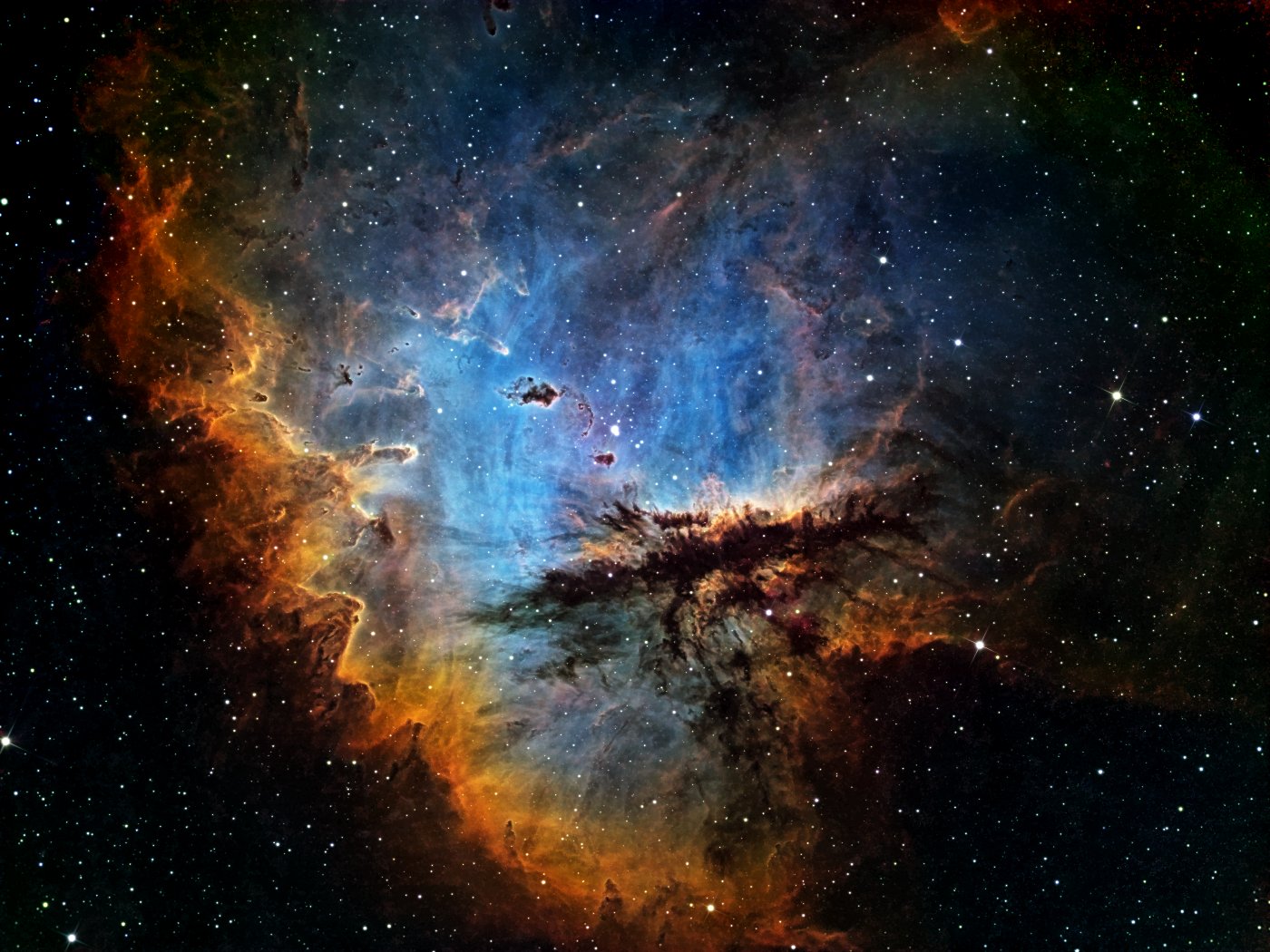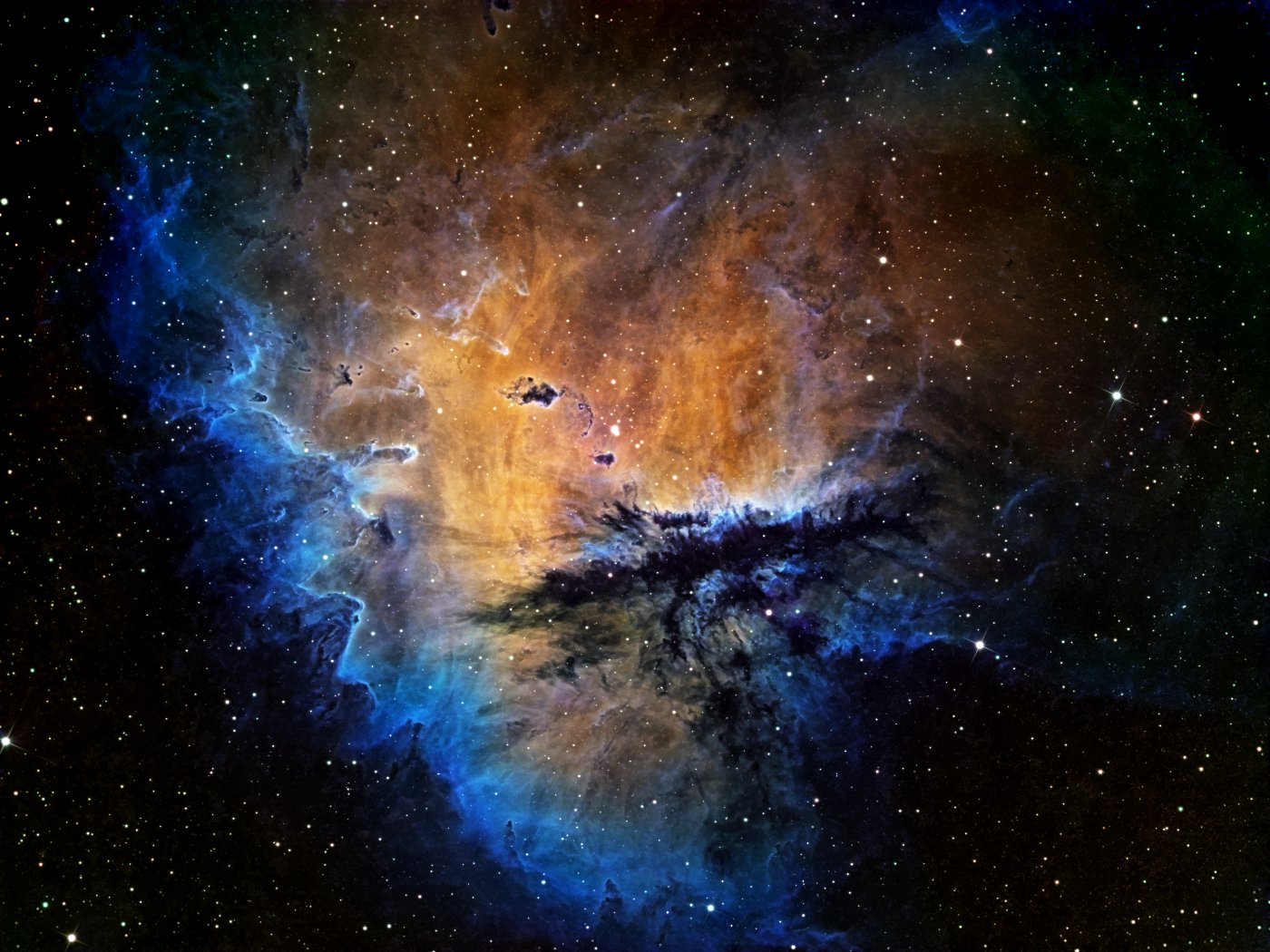SH2-184 (NGC 281, Pacman Nebula) and IC 1590
SH2-184 (NGC 281, Pacman Nebula) is an emission nebula in constellation Cassiopeia with an apparent diameter of about 40' (arcminutes). The nebula is mainly ionized by the young (only about 3.5 million years old, [1]) star cluster IC 1590, in particular by the multiple star system HD 5005. Distance of HD 5005 according to Gaia DR3 data is about 10,000 (±650) light years (ly).
The nebula contains many Bok globules. This are dust concentrations undergoing an gravitational collapse which results in new stars.
A larger star formation region is NGC 281-W (or NGC 281 West). For this region there exist radio parallax measurements for an H2O maser ([2]): about 9200 (±850) ly and Methanol masers ([3]): about 7800 (±450) ly
Click on the images for a full scale version.
The Bok globules are the small dark nebulae. The main ionizing source HD 5005 is the bright star in the center. The large dark structure just below the center in the image is the star formation region NGC 281-W.


Image data
| FOV: | 0.67° × 0.5° | ||||||||||
|---|---|---|---|---|---|---|---|---|---|---|---|
| Date: | 2019-2021 | ||||||||||
| Location: | Pulsnitz, Germany | ||||||||||
| Instrument: | 400mm Newton at f=1520mm | ||||||||||
| Camera Sensor: | Panasonic MN34230 | ||||||||||
| Orientation: | North is up (approximately) | ||||||||||
| Scale: | 0.8 arcsec/pixel (at full resolution) | ||||||||||
| Total exposure times: |
|
Image processing
All image processing steps are deterministic, i.e. there was no manual retouching or any other kind of non-reproducible adjustment. The software which was used can be downloaded here.Image processing steps where:
- Bias correction, photon counting
- Dark current subtraction, flatfield correction, noise estimation
- Alignment and brightness calibration using stars from reference image
- Stacking with masking unlikely values and background correction
- Extracting stars from the emission line images using information from continuum images
- Denoising and deconvolution both components (stars and residual)
- RGB-composition
- Dynamic range compression using non-linear high-pass filter
- Tonal curve correction
References
- H. H. Guetter, D. G. Turner, (1997). "IC 1590, A Young Cluster Embedded in the Nebulosity of NGC 281". Astronomical Journal v.113, p.2116
- Mayumi Sato, et al. (2008). "Distance to NGC 281 in a Galactic Fragmenting Superbubble: Parallax Measurements with VERA". Publications of the Astronomical Society of Japan: 60 (5): Pages 975–989
- K. L. J. Rygl, A. Brunthaler, M. J. Reid, K. M. Menten, H. J. van Langevelde, Y. Xu (2010). "Trigonometric parallaxes of 6.7 GHz methanol masers". Astronomy & Astrophysics 511: A2